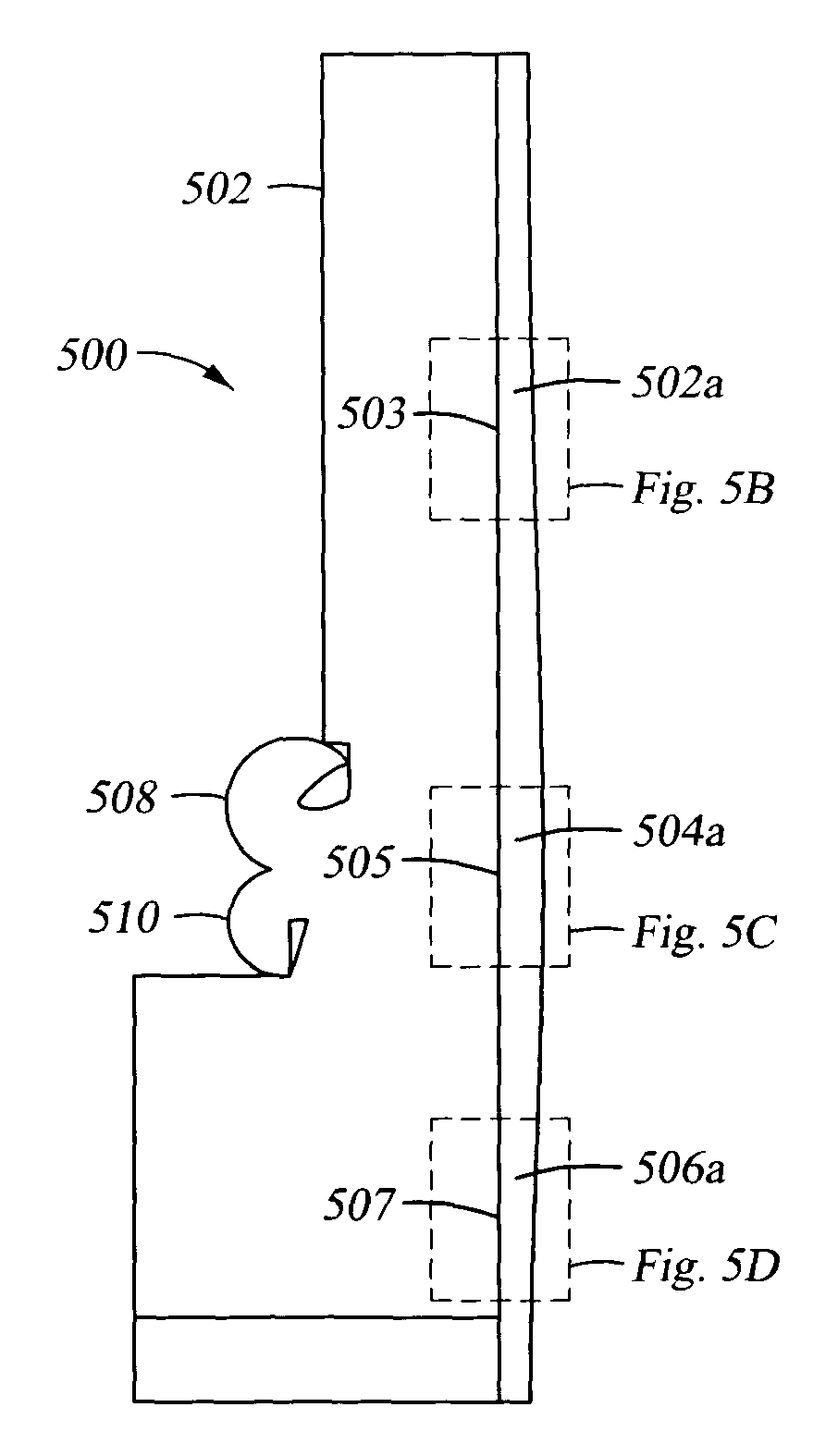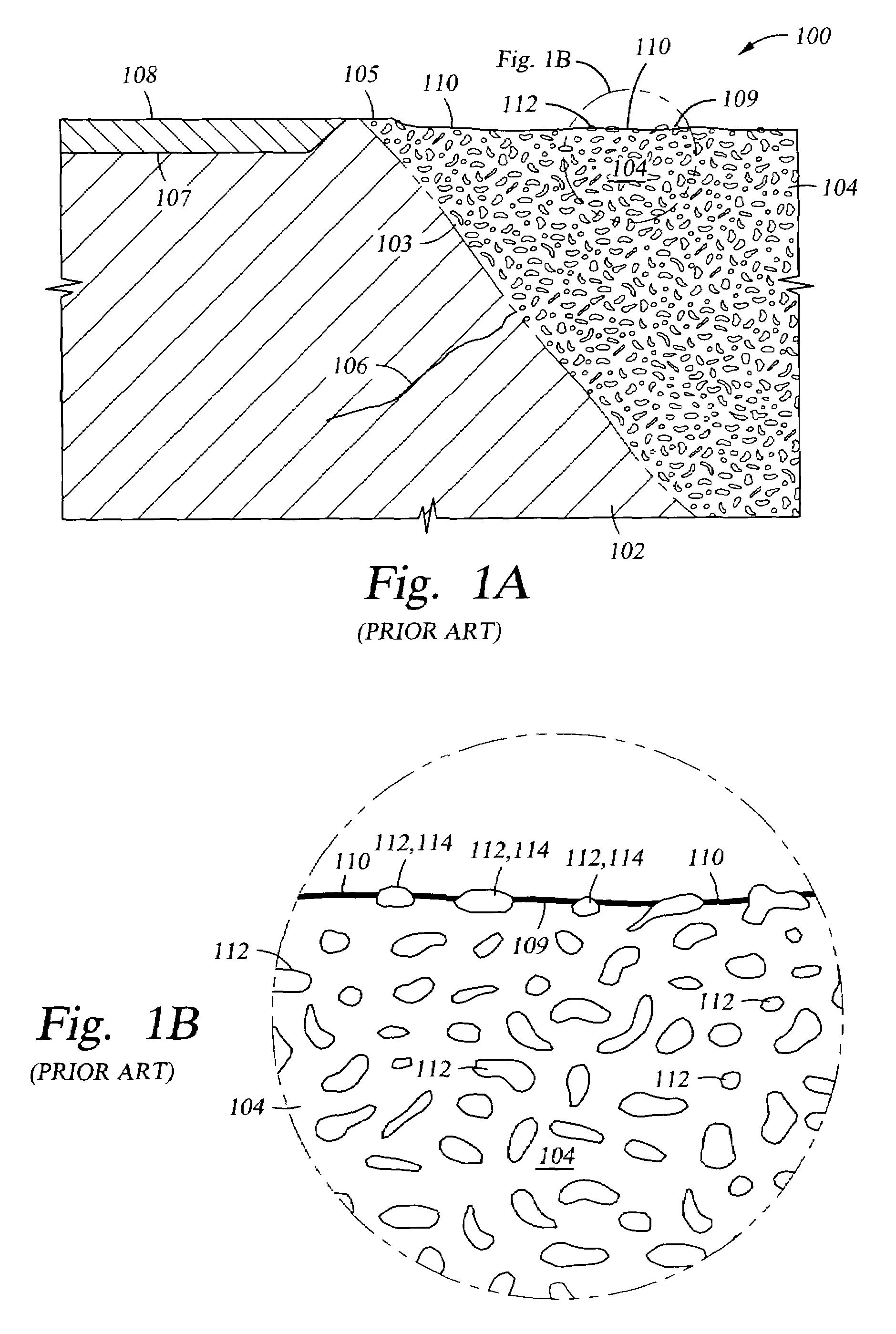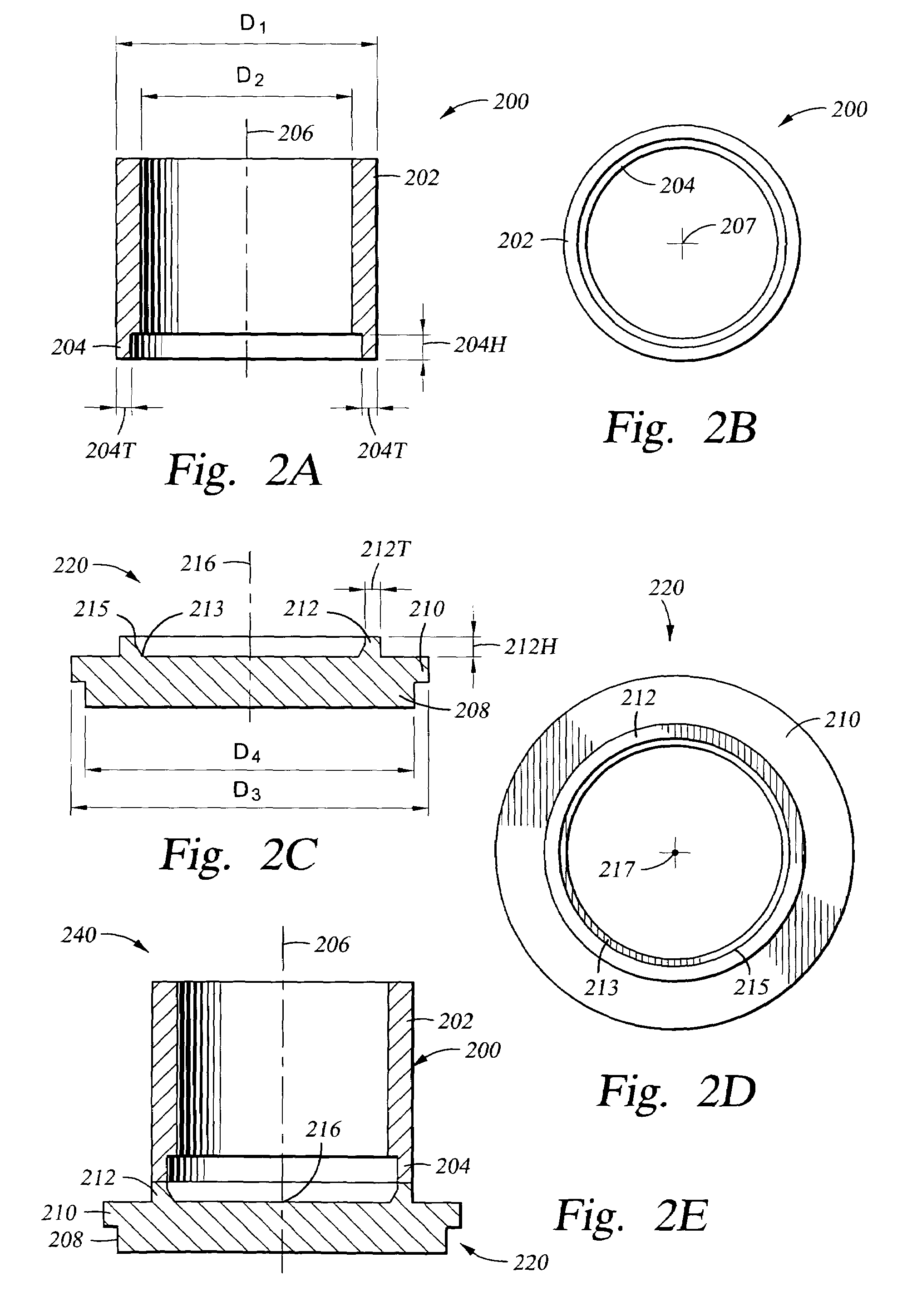Semiconductor processing apparatus including plasma-resistant, welded aluminum structures
a technology of semiconductor processing and aluminum structure, which is applied in the direction of soldering apparatus, manufacturing tools,auxillary welding devices, etc., can solve the problems of shortening the performance life of anodized aluminum articles, and achieve the effect of improving performan
- Summary
- Abstract
- Description
- Claims
- Application Information
AI Technical Summary
Benefits of technology
Problems solved by technology
Method used
Image
Examples
example one
[0053]For purposes of illustration, and not by way of limitation, the invention will be described with respect to a method of producing a plasma process chamber liner of the kind used by assignee Applied Materials, Inc. in a number of different semiconductor processing systems. For reference purposes, one skilled in the art may find it helpful to refer to product information for the Applied Materials, Inc. e-Max™ chamber liner, e-Max™ cathode liner, and for the MXP+™ chamber liner for examples of apparatus which have been fabricated by us during the development of the invention. The size of these process apparatus elements requires a weld surface area of 45 in2, 35 in2, and 45 in2, respectively.
[0054]The e-Max™ process chamber is used in the plasma etching of structures on semiconductor substrates. Plasma etching is frequently done using halogen-containing plasmas which are particularly corrosive. In view of the information we developed with respect to the properties of various alum...
example two
[0065]In another set of experiments two additional prototype LP™ alloy chamber liners were prepared in much the same manner as described above. With respect to Prototype No. 1, during the welding operation, the spindle RPM was about 500, the upset was 1.160 inch, and the upset force was about 4,000 lbs. FIG. 6 is a graph 600 showing process variables as a function of time during the welding operation. In particular, axis 604 shows a nominal value, while axis 602 shows time in seconds. Curve 610 shows the spindle RPM, where the number on the nominal value axis 604 is equal to the spindle RPM×10−3; i.e., the number on the nominal value axis 604 must be multiplied by 103 to obtain the RPM. Curve 608 shows the upset pressure, where tile number on the nominal value axis 604 is equal to the upset pressure in psi×10−4; i.e., the number on the nominal value axis 604 must be multiplied by 104 to obtain the upset pressure in psi. Curve 610 shows the upset displacement in inches.
[0066]With res...
PUM
| Property | Measurement | Unit |
|---|---|---|
| diameter | aaaaa | aaaaa |
| diameter | aaaaa | aaaaa |
| diameter | aaaaa | aaaaa |
Abstract
Description
Claims
Application Information
 Login to View More
Login to View More - R&D
- Intellectual Property
- Life Sciences
- Materials
- Tech Scout
- Unparalleled Data Quality
- Higher Quality Content
- 60% Fewer Hallucinations
Browse by: Latest US Patents, China's latest patents, Technical Efficacy Thesaurus, Application Domain, Technology Topic, Popular Technical Reports.
© 2025 PatSnap. All rights reserved.Legal|Privacy policy|Modern Slavery Act Transparency Statement|Sitemap|About US| Contact US: help@patsnap.com



